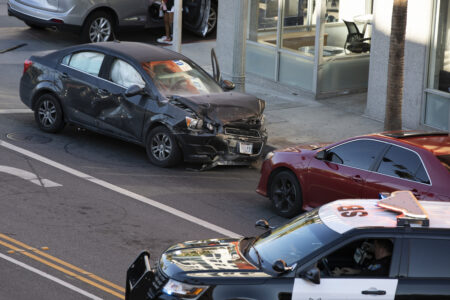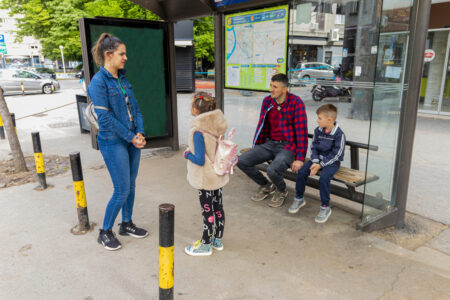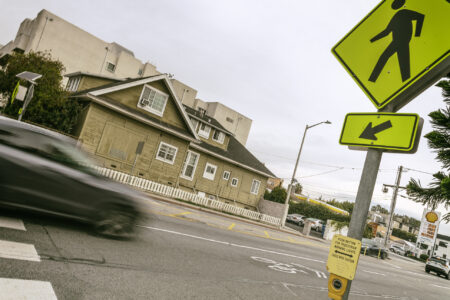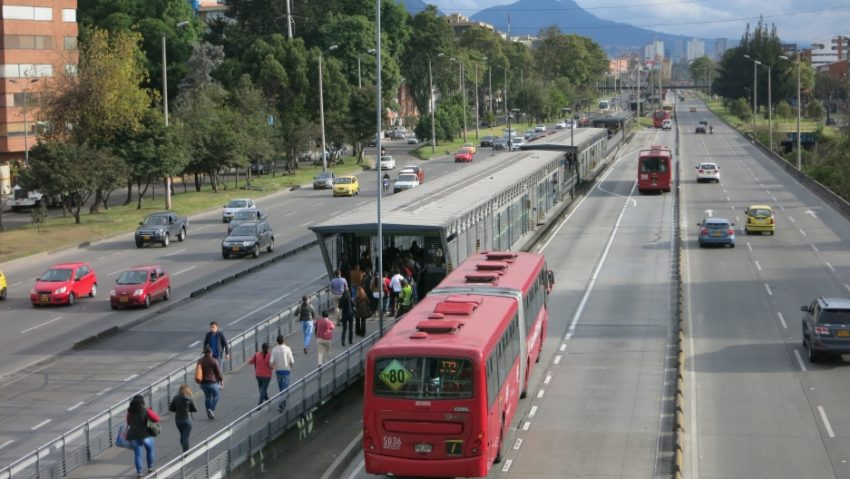
Share On Social!
Buses don’t run to a Latino mobile home community outside Minnesota’s Twin Cities.
Instead, people there are forced to rely on cars─dangerous, expensive, polluting cars─ when they need to get to jobs, food, and healthcare. This isolates them from opportunities for health, jobs, and affordable housing, just like many other suburban and rural parts of our nation.
Fortunately, planned public transit improvements will enable more buses across the Twin Cities, including the mobile home community.
But how? Will it work for Latinos and all vulnerable neighborhoods?
Twin Cities Growing in Population, Traffic
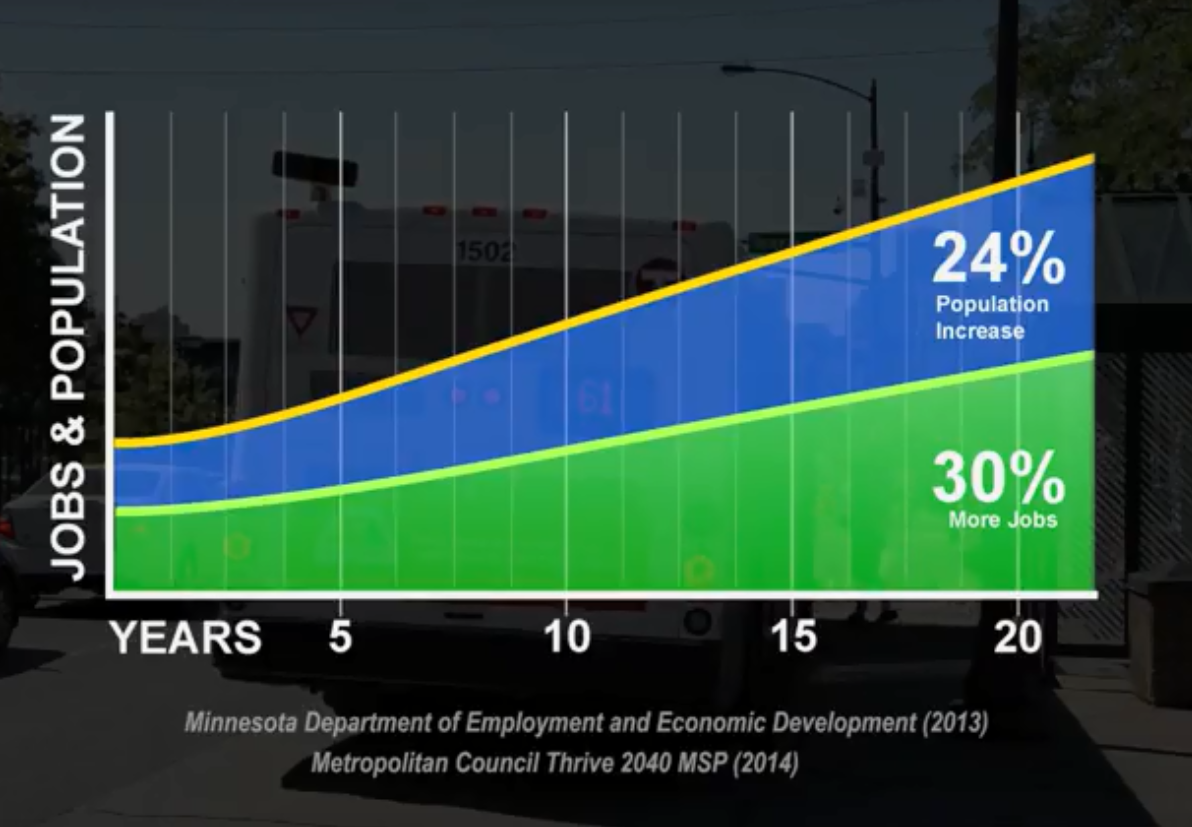 The area to the east of the Twin Cities─the Interstate 94 (I-94) corridor─is expected to see a 24% increase in population and a 30% increase in jobs by 2040, according to the Gold Line Overview Video.
The area to the east of the Twin Cities─the Interstate 94 (I-94) corridor─is expected to see a 24% increase in population and a 30% increase in jobs by 2040, according to the Gold Line Overview Video.
That warrants multiple transportation and commute options.
The area’s transit agency, Metro Transit, already offers 130 transit routes. This serves 264,347 riders on an average weekday, 71% by bus and 29% by light rail or commuter rail.
Demand is rising to scale back on car dependence, which can harm physical and mental health.
Metro Transit is an operating division of the 17-member Metropolitan Council, which is the regional policy-making body, planning agency, and provider of essential services for the seven-county Twin Cities metro area. Council members are appointed by the Governor and confirmed by the State Senate.
Over several years, the Metropolitan Council conducted numerous studies, like the Highway Transitway Corridor Study, Arterial Bus Rapid Transit Study, and Transportation System Performance Evaluation, to identify opportunities to improve transit service and add Bus Rapid Transit on some corridors.
Bus Rapid Transit is like light rail. It can offer light-rail-style amenities at a fraction of the cost.
Bus Rapid Transit can solve congestion and reduce traffic collisions, which cost twice as much as congestion in urban areas and six times as much in rural areas, according to a 2011 AAA study.
Watch a video about how bus rapid transit and Complete Streets improvements on a 9.3 mile corridor helped transform Cleveland.
The I-94 corridor was identified as a priority corridor for Bus Rapid Transit with a dedicated bus lane.
Planning Bus Rapid Transit
The Gateway Corridor Commission, a coalition of Washington and Ramsey County officials, business leaders and representatives of local cities discussed a nine-mile, dedicated lane Bus Rapid Transit line connecting downtown St. Louis and Twin Cities communities along the I-94 corridor.
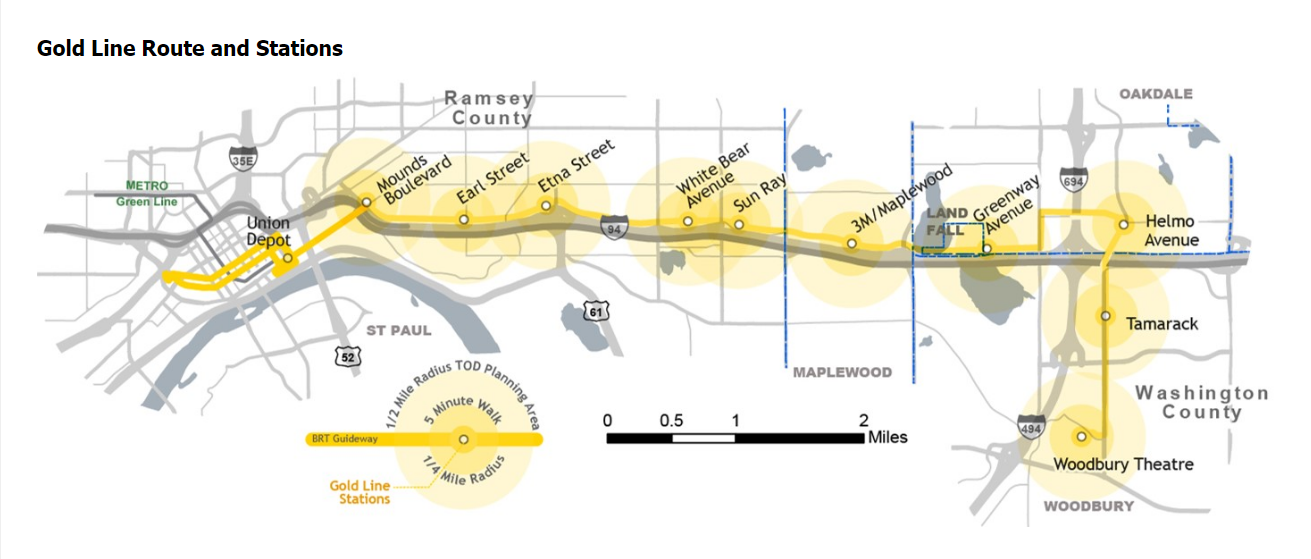 The “Gold Line” is proposed as Minnesota’s first Bus Rapid Transit line with dedicated, bus-only lanes.
The “Gold Line” is proposed as Minnesota’s first Bus Rapid Transit line with dedicated, bus-only lanes.
Through frequent, all day service in both directions, the Gold Line would connect residents to the airport, Mall of America, Target Field, the University of Minnesota, historic neighborhoods, 3M global headquarters, and other transit hubs, expanding access to jobs, shopping, and recreation.
“This isn’t just a transit line, it’s a life line for working families,” said Ramsey County Commissioner Rafael Ortega. “Neighborhoods with large numbers of transit-dependent people, and who need greater access to job opportunities across the Twin Cities region, will be connected to the region via Gold Line with state-of-the-art transit.”
The Gold Line proposes 10 stops with safe crosswalks and new sidewalks.
One of those stops would be the small mobile home city of Landfall (56.1% Latino). Over 1,200 people in Landfall and neighboring Oakdale would be within a 10-minute walk of a Gold Line stop.
Community members want safe places to walk and bicycle between station areas, affordable housing, and jobs near station areas, according to the Gateway Gold Line Bus Rapid Transit Health Impact Assessment, which focused on health issues in land use decisions around the line.
“In Gold Line BRT communities, personal safety and crime prevention were among the elements perceived as having the greatest influence on creating healthier environments,” according to the assessment, a planning tool for those promoting health through land use and transportation.
Paying for Bus Rapid Transit
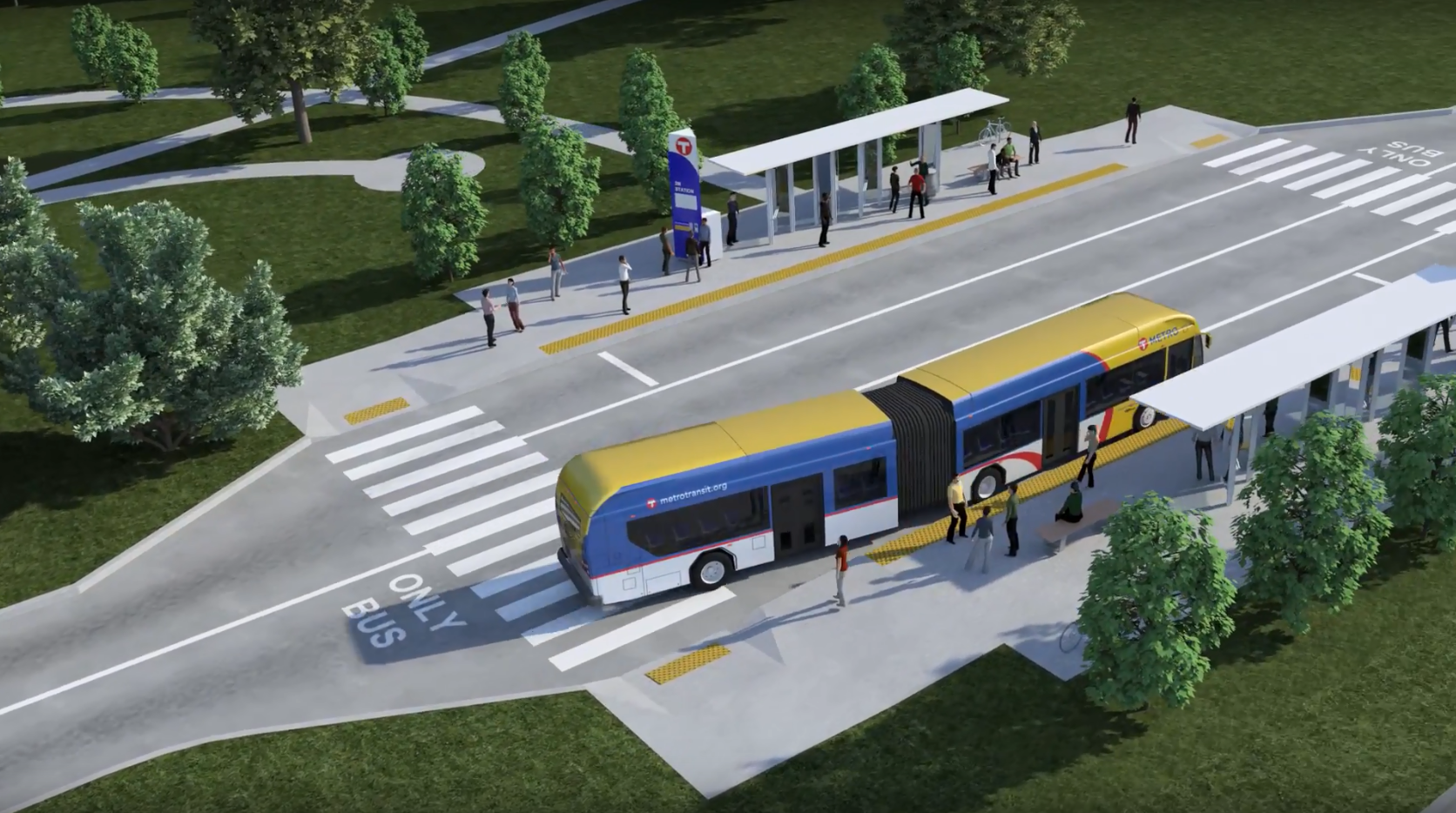 The Gold Line is proposed as Minnesota’s first Bus Rapid Transit line that operates primarily within bus-only lanes. It is one of 17 rapid transitways in a proposed build out of the Metro Transit system designed to connect 522,000 people to 310,000 jobs.
The Gold Line is proposed as Minnesota’s first Bus Rapid Transit line that operates primarily within bus-only lanes. It is one of 17 rapid transitways in a proposed build out of the Metro Transit system designed to connect 522,000 people to 310,000 jobs.
It will take $420 million to make the Gold Line operational in 2024.
Funding will come from many local, state and federal funding streams.
For example, after the Minnesota legislature failed to include an expected $42 million in its bonding bill in May 2017, counties have been compensating.
Ramsey County officials voted to increase sales tax for transportation from one quarter cent to a half a cent to fund five transitways, including the Gold Line, in June 2017.
The Counties Transit Improvement Board, a joint powers board of seven metro counties, already imposes a $20 per vehicle excise tax on motor vehicle sales, which will now be collected to fund the transitways, twincities.com reports.
At the national level, the Federal Transit Administration allowed the Gold Line project to enter the Project Development phase of the federal New Starts program in January 2018.
This is the first step to securing federal funding. Local spend will also be eligible for potential matching of federal funds in the future.
Opposition to Bus Rapid Transit
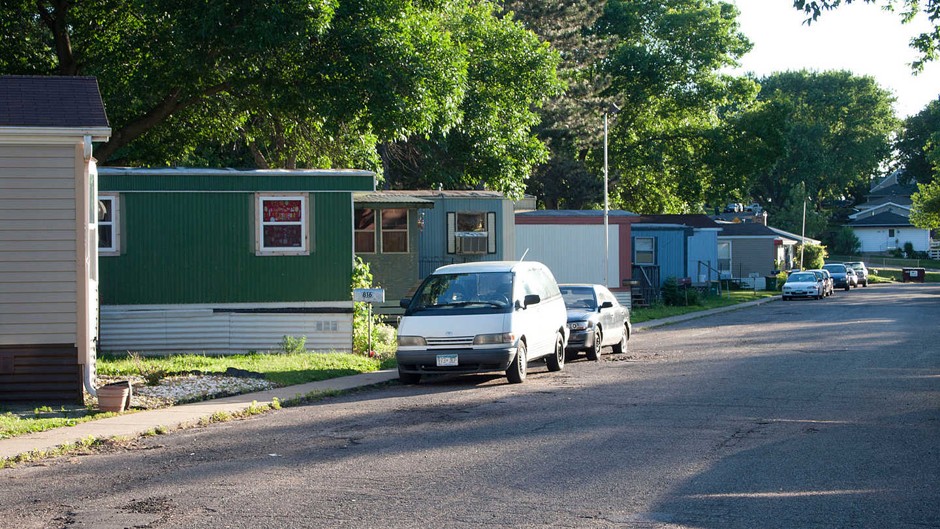
The Gold Line faced opposition in the Twin Cities.
A “kill-the-bus” crusade of suburban residents were concerned about being “urbanized,” according to twincities.com.
As cities experience the economic benefits of population and job growth, the line between suburb and city, previously established during sprawling white-flight, gets blurred. Moreover, the line between city and neighboring city gets blurred. Cities are creeping closer to their outer suburban areas, which are creeping closer to neighboring cities, outer towns and rural areas. And vice versa.
The oil lobby is alleged to have their hands in anti-transit rhetoric across the country, fueling local opposition again public transit.
Implicit bias also plays a role in opposition to or discriminatory investment in public transit. Implicit bias is defined as the attitudes or stereotypes that affect our understanding, actions, and decisions in an unconscious manner. Learn more about how automatic and effortless mental associations can undermine our true intentions in the Kirwan Institute for the Study of Race and Ethnicity’s State of the Science: Implicit Bias Review.
Opposition also comes from people who are concerned that transit-related development will cause land values to spike, pricing them out of their communities and displacing them.
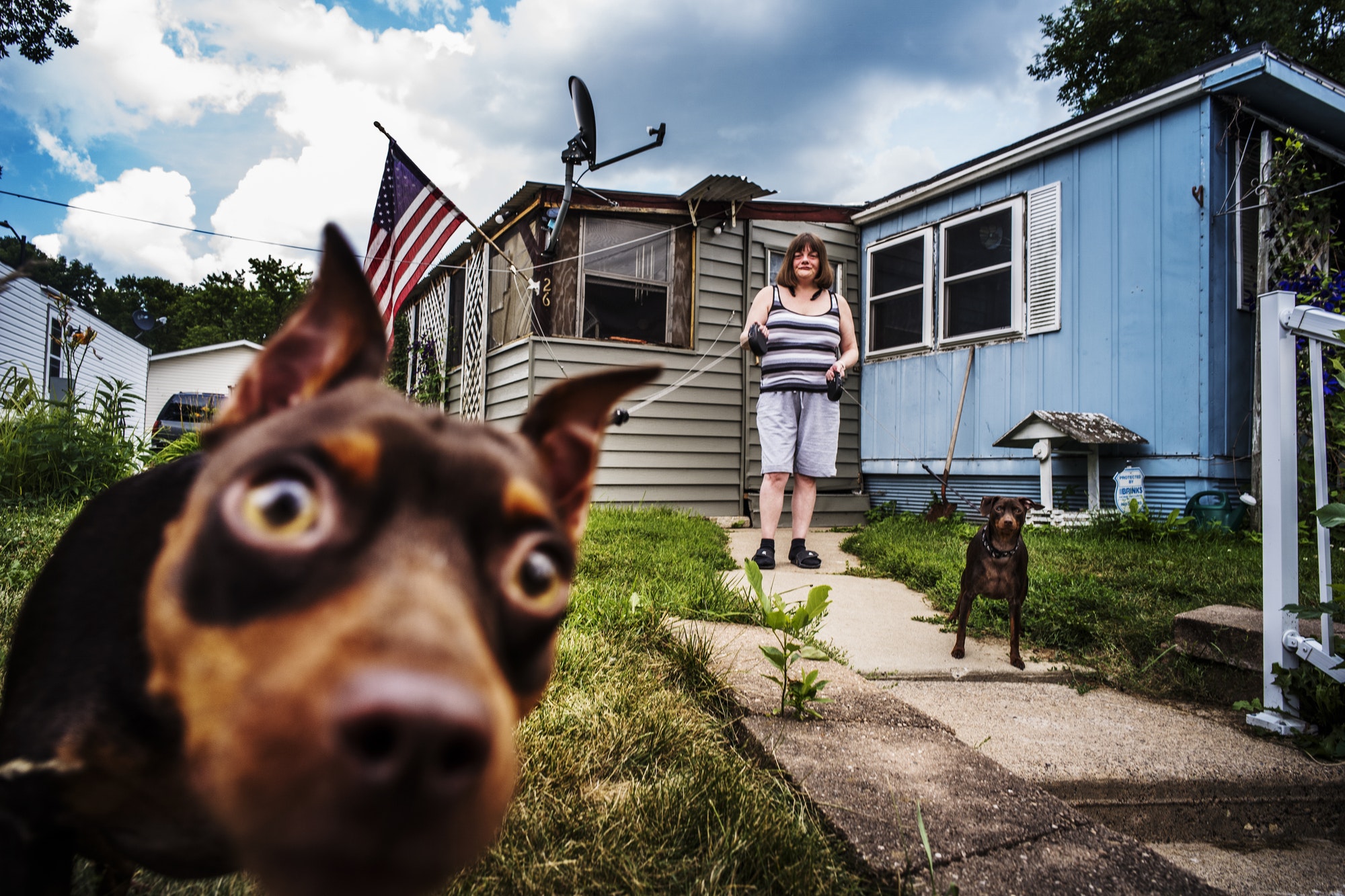
In Landfall, Gold Line Partners, previously known as the Gateway Corridor Commission, are discussing the benefits of transit-oriented development, which has some people worried.
Residents of mobile home parks are particularly vulnerable to being displaced, because, although they are homeowners, they rent the land their home is on. They are at the whim of the property who can raise rents or sell the property forcing everyone to move. A mobile park just 16 miles away closed the previous year, displacing almost 100 families.
Landfall residents are safe because the local mobile park is owned by Washington County.
They are also learning more about the social, environmental and economic benefits of public transit from groups that support the Gold Line and transit-oriented development.
In fact, a developer in neighboring Oakdale modified original plans for an office park and shifted to a mixed-use, transit friendly development, according to one source.
“Mass transit is as much about economic development as it is about moving people,” wrote Bob Collins of Minnesota Public Radio.
Learn more about Gold Line station area planning and attend a meeting. Check out these resources to inject health into transportation projects and policies and share them at the meeting or submit a comment online. You can also share the video about Cleveland’s HealthLine.
You can also access Gold Line information in Spanish.
By The Numbers
27
percent
of Latinos rely on public transit (compared to 14% of whites).

